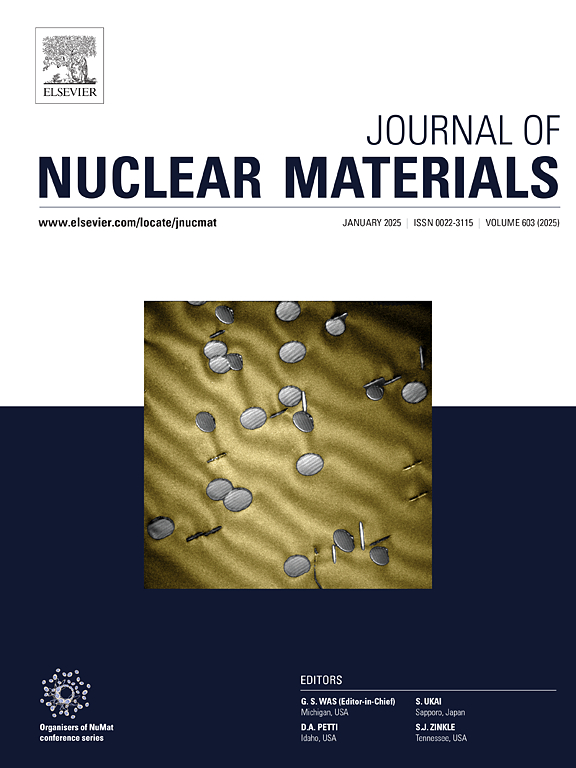Dissolution behavior of U3O8, FeUO4, and UO2-Zr-stainless steel system samples generated in an oxidative atmosphere in the presence of malonic acid
IF 2.8
2区 工程技术
Q3 MATERIALS SCIENCE, MULTIDISCIPLINARY
引用次数: 0
Abstract
Understanding the dissolution behavior of the UO2-Zr-stainless steel (SS) system in the presence of organic acids is crucial for the safe decommissioning of the Fukushima Daiichi Nuclear Power Plants, as well as for the future treatment toward deep geological disposal of fuel debris. The dissolution behavior of UO2-Zr-SS samples heated under oxidative conditions, along with the single uranium phases formed in the samples (U3O8 and FeUO4), was investigated through static leaching tests using malonic acid. Malonic acid promoted the dissolution of both U3O8 and FeUO4 solid phases owing to complex formation. The uranium concentrations of U3O8 and FeUO4 increased with malonic acid concentration and matched at steady state. In the absence of malonic acid, the U concentration of FeUO4 was less than its solubility because of uranium adsorption on an iron hydrolysis solid phase. The uranium concentration after long immersion of the UO2-Zr-SS system samples could be explained by the behavior of U3O8 and FeUO4. In the absence of malonic acid, U concentration decreased owing to adsorption onto the iron solid phase, similar to the behavior of FeUO4. In contrast, in the presence of malonic acid, U concentration was consistent with that observed for U3O8 and FeUO4.

求助全文
约1分钟内获得全文
求助全文
来源期刊

Journal of Nuclear Materials
工程技术-材料科学:综合
CiteScore
5.70
自引率
25.80%
发文量
601
审稿时长
63 days
期刊介绍:
The Journal of Nuclear Materials publishes high quality papers in materials research for nuclear applications, primarily fission reactors, fusion reactors, and similar environments including radiation areas of charged particle accelerators. Both original research and critical review papers covering experimental, theoretical, and computational aspects of either fundamental or applied nature are welcome.
The breadth of the field is such that a wide range of processes and properties in the field of materials science and engineering is of interest to the readership, spanning atom-scale processes, microstructures, thermodynamics, mechanical properties, physical properties, and corrosion, for example.
Topics covered by JNM
Fission reactor materials, including fuels, cladding, core structures, pressure vessels, coolant interactions with materials, moderator and control components, fission product behavior.
Materials aspects of the entire fuel cycle.
Materials aspects of the actinides and their compounds.
Performance of nuclear waste materials; materials aspects of the immobilization of wastes.
Fusion reactor materials, including first walls, blankets, insulators and magnets.
Neutron and charged particle radiation effects in materials, including defects, transmutations, microstructures, phase changes and macroscopic properties.
Interaction of plasmas, ion beams, electron beams and electromagnetic radiation with materials relevant to nuclear systems.
 求助内容:
求助内容: 应助结果提醒方式:
应助结果提醒方式:


